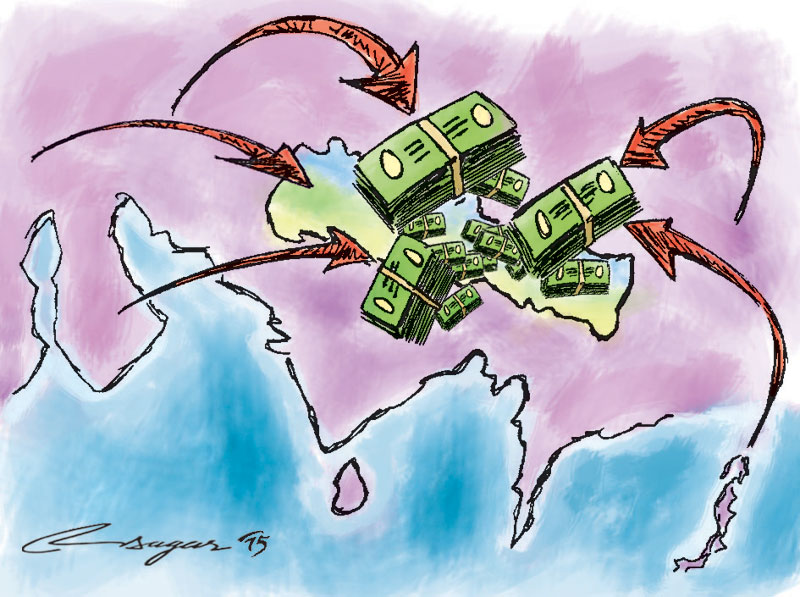Remittance growth retarded to below five per cent last fiscal
Kathmandu, August 28
Remittance growth has plummeted heavily to an average of 4.93 per cent in last fiscal as compared to 17.11 per cent of the fiscal 2015-16. According to Nepal Rastra Bank (NRB) data, remittance inflow in the country stood at Rs 695.45 billion in fiscal 2016-17 as compared to Rs 665.06 billion of fiscal 2015-16. In fiscal 2014-15, the country had recorded remittance inflow of Rs 617.28 billion.
Global oil price shocks and drop in outflow of migrant workers caused slowdown in remittance growth. At the same time, depreciation of the US dollar against Indian currency is another reason behind low growth of remittances in terms of Nepali rupee, as it is pegged with the Indian currency.
The negative growth rate of 2.5 per cent in the first month of fiscal 2016-17 moved towards positive territory from the second month. Remittance growth had nosedived since last quadrimester of fiscal 2015-16 and growth rate of remittance in last fiscal remained low when the shrunk base of the last quadrimester is taken into account.
The NRB data show that remittance growth declined steeply after reaching the monthly highest rate of 7.8 per cent in the fourth month of last fiscal to land at 4.6 per cent in the last month.
Remittance growth slowed down since the end of fiscal 2015-16 basically due to steep fall in oil prices that hit the economic activities in the Gulf-countries, which are the major source of remittances. Along with economic slowdown in the Gulf, employment opportunities for foreign job-seekers also declined.
According to the Department of Foreign Employment (DoFE), number of foreign job-seekers also declined after the devastating earthquake in 2015 as more youths chose to stay with their families to help them rebuild their lives in the earthquake-hit districts. Diplomatic crisis in Qatar, global oil price shocks and tension in Middle East also caused further drop in outflow of migrant workers. According to DoFE, the number of workers who left for jobs with the help of foreign employment agencies went down by 7.92 per cent. A total of 34,502 individuals left the country for jobs abroad in the last fiscal as compared to 37,471 individuals in fiscal 2015-16.
On other hand, Nepali currency has become stronger as compared to US dollar in the recent months. Exchange rate of Nepali currency vis-à-vis dollar was Rs 107.72 on July 14 last year. The dollar has weakened by 4.60 per cent over the course of the year to be fixed at Rs 102.76 today.
The country is over-dependent on remittances to make its foreign exchange reserves robust. According to Senior Economist Keshav Acharya, remittance has been lubricating the Nepali economy since last one-and-a-half decades and drop in remittances could adversely affect the economy. Though the country is in comfortable position in terms of foreign exchange reserve, the continuous drop in remittance growth could be a cause for concern for the government.
As the country’s current account slipped into a deficit of Rs 10.13 billion in 2016-17 as against a significant level of surplus of Rs 140.42 billion in the previous year, continued drop in remittance growth could also affect the balance of payments (BoP) in the near term.






